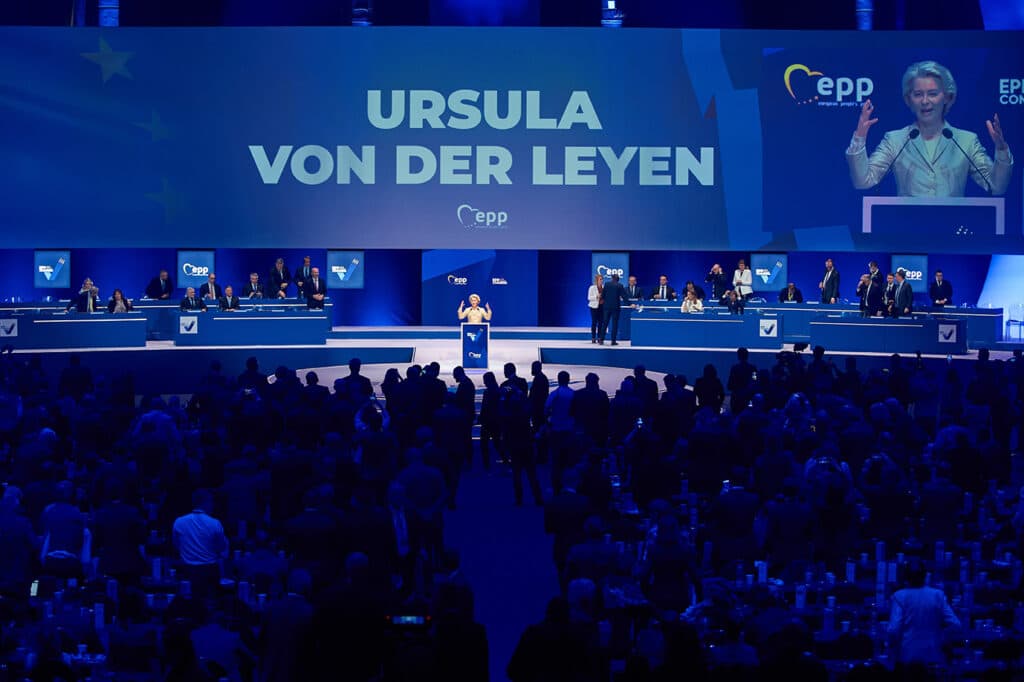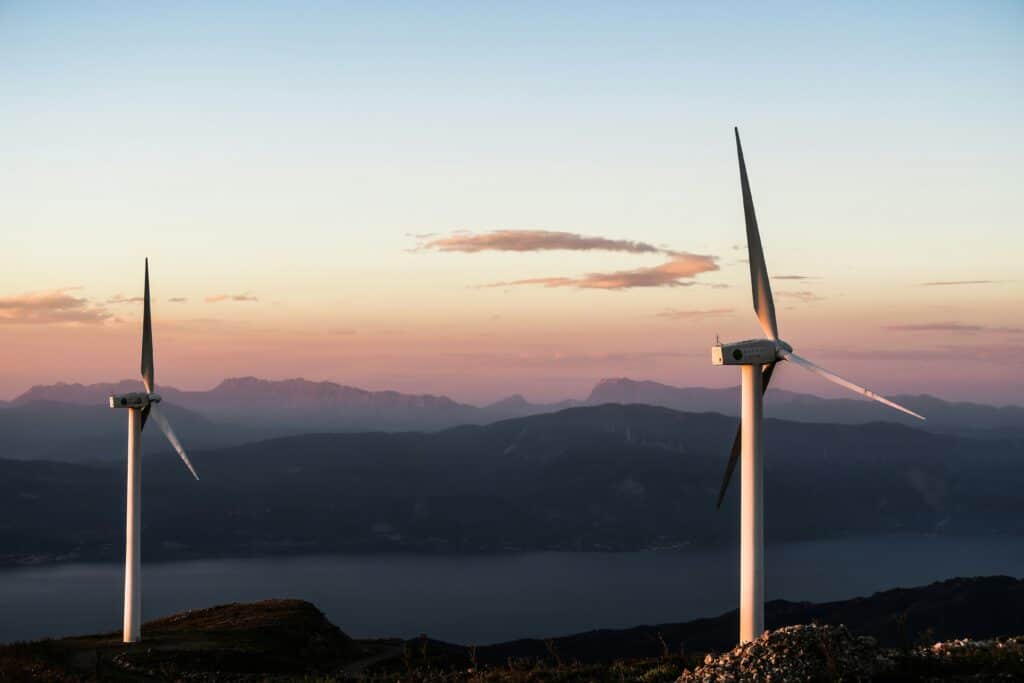A first look at the EU Hydrogen and Decarbonised Gas Markets Package
This article by FSR researcher James Kneebone provides a first look at the newly-released gas package and its major areas of interest.
Yesterday, 15 December 2021, the European Commission released its ‘Hydrogen and Gas Market Decarbonisation package’ (“gas package”), along with legislation on methane emissions and the energy performance of buildings, as well as a Communication on Sustainable Carbon Cycles.
This latest batch of deliverables is the concrete legislative implementation of some of the legislative proposals outlined in July’s ‘Fit for 55’ package, which looked to signpost a path to achievement of the blocs 2030 climate and energy ambitions. Chief amongst these aims is the goal to deliver a 55% reduction in greenhouse gas emissions by 2030, relative to 1990 levels – as per the EU Green Deal and EU Climate Law.
The following article provides some background information, analysis, as well as the FSR position and overall reception of the gas package. For information on the methane publication as well as wider reading on related subjects, see the list of links at the bottom of this article.
Background
Yesterday’s gas package is the fourth iteration of comprehensive legislation in the sector, following most recently the so-called ‘Third Energy Package’ in 2009. The two major components of yesterday’s publication were the recast of the Regulation on conditions for access to the natural gas transmission networks (715/2009) (“Gas Regulation”), and the recast of the Directive on common rules for the internal market of natural gas (2009/73) (“Gas Directive”), as well as their corresponding Annexes[1], [2].
The core aims of the updates were to (i) establish the conditions for facilitating the rapid and sustained uptake of renewable and low-carbon gases, (ii) improve the market conditions and increase engagement of gas consumers, (iii) better account for contemporary security of supply concerns, (iv) address price and supply concerns at the level of the Union, (v) recalibrate the structure and composition of regulatory bodies.
We will thematically cover some of the major areas of interest and subsequently circle back to give some initial reflections.
Network
In terms of the overall management, coordination, and planning of the network there are three key developments. Firstly, an entity for European Distribution System Operators (DSOs) will be set up in accordance with Articles 52 to 57 of Regulation (EU) 2019/943. Full details on the scope and role of the entity can be found in Articles 36 and 37 of the Gas Regulation. Secondly, a network association will be established for hydrogen network operators, ‘The European Network for Network Operators of Hydrogen’ (ENNOH) (Article 40, Gas Regulation). The tasks of ENNOH include writing relevant network codes, as well as union-wide, non-binding ten-year network development plans (TYNDPs) for the hydrogen sector, full details can be found in Article 42. Hydrogen network operators can submit applications to join ENNOH to ACER[3] by 1 September 2024, until ENNOH is established the European Network for Transmission System Operators for Gas (ENTSOG) will be responsible for the development of Union-wide network development plans for gas and hydrogen networks (Article 41). Thirdly, and remaining with the TYNDP theme, hydrogen interconnection projects will now be eligible to apply for funding if they fall within the scope of the wider TYNDPs of ENTSOG, provided they are not already covered under the Important Projects of Common European Interest (IPCEIs) (Article 53, Gas Directive).
Ownership and access to an EU-wide hydrogen network (once established) was one of the key areas of debate in the lead-up and consultation prior to the packages’ release. In short, the majority of the rules governing the existing natural gas network will remain relatively unchanged for decarbonised gases and also carry over for hydrogen networks. This is true as concerns ownership unbundling of transmission system operators (TSO) (Arts. 54-64 – Gas Directive), network operators (Arts. 65-69 – Gas Directive), and separation of the regulated asset base (RAB) (Article 4 – Gas Regulation), as well as Third Party Access (TPA) to the natural gas and hydrogen grids, including storage and terminals (Arts. 5 – Gas Regulation and 27-33 – Gas Directive). Nevertheless, as per Article 31(4) of the Gas Directive, Member States may decide not to grant TPA to their hydrogen networks until 31 December 2030. This is one of a number of temporary exemptions to the recast Gas Directive aimed at trying to encourage the development of the network and associated hydrogen market. Other temporary exemptions for existing and geographically confined hydrogen networks include articles 31 and 62-64 of the Gas Directive as well as Articles 6 and 47 of the Gas Regulation, provided they meet the criteria as outlined in Articles 47 and 48 of the Gas Directive. These exemptions cover things such as tariffs, access to terminals and storage, as well as unbundling obligations[4]. There will be an equal regulatory regime for intra-EU and import pipelines.
Market
Incentives for renewable/ low-carbon gases and or disincentives for unabated fossil gas were also highly anticipated, as well as how classifications and distinctions could be made between gases of different origins and how they might be favoured.
The revised Gas Directive included in the new package asserts that “Low-carbon fuels (LCFs) such as low-carbon hydrogen (LCH) may play a role in the energy transition, particularly in the short and medium-term to rapidly reduce emissions of existing fuels, and support the uptake of renewable fuels such as renewable hydrogen.”, before highlighting the need for certification of fuels of different origins, according to a lifecycle assessment (LCA) of greenhouse gas (GHG) emissions. Broadly speaking, neither the Gas Directive nor the Regulation make any meaningful distinction between the treatment of ‘low carbon’ and ‘renewable’ fuels or gases.
There is a definition of ‘low-carbon hydrogen’ and ‘low-carbon gases’ more widely in Articles 2 and 8 of the Gas Directive, which establishes a “greenhouse gas emission reduction threshold of 70%.” The GHG in question is not specified[5] nor the benchmark against which the 70% reduction applies[6], the methodology for calculating compliance follows Directive (EU) 2018/2001 on the promotion of the use of energy from renewable sources. As per Article 2 of the Gas Directive, ‘renewable hydrogen’ and ‘renewable gases’ in general[7] are not defined through new criteria or threshold, but again in reference to Directive (EU) 2018/2001.
In terms of support measures for decarbonised gases, there is no stipulation of a mandatory offtake for industry (demand side) or a direct financing mechanism (supply-side). However, renewable and low carbon hydrogen will receive a 75% discount from various entry and exit tariffs as per Article 16 of the Gas Regulation. Moreover, until January 1 2031 tariffs will not be chargeable against the transmission of these gases across interconnection points between Member States (Article 6(7) and 16). To qualify for an exemption on charges, a “sustainability certificate” must be provided in line with Articles 29 and 30 of Directive (EU) 2018/2001 (Article 16, Gas Regulation). Finally, in an effort to facilitate the use of the existing natural gas network in the transmission of hydrogen, blends of up to 5% hydrogen volume into natural gas flows shall be accepted and facilitated at cross-border points from October 2025 (Article 20, Gas Regulation).
There are no specific targets or details on the phase-out of unabated fossil gas (also not defined), however, there is a 2049 sunset date set for the conclusion of long-term supply contracts (Article 27, Gas Directive).
The Director of the Florence School of Regulation (FSR), Jean-Michel Glachant, commented on the release:
I warmly welcome today’s publications, they go a long way to establishing the framework for decarbonising and modernising the gas sector over the coming years. There has been considerable talk and deliberation surrounding the possible details of this important legislation. At the FSR we are happy to see a range of sound stakeholder views have been considered in the final outcome. We do hope that the clarity provided today should be enough to begin in earnest with our drive to decarbonise the sector. Of course, the work will continue. We remain eager and motivated to contribute.
Consumers
In the lead-up to this new legislation, there has been a long and widely held perception that consumer concerns in the gas sector were lagging behind the electricity sector – where they have been more recently bolstered through the Clean Energy Package (CEP). The European Commission has been undertaking extensive consultation on this area in preparation for yesterday’s package, including through the Citizens Energy Forum and its associated working groups, amongst which the FSR is a member.
The Gas Directive makes regular references to improving consumer provisions. Articles 3 and 4 on ‘General rules for the organization of the market’ stipulate that all customers should be free to purchase gas from a supplier of their choice and that they should have access to more than one supplier of natural gas or hydrogen at the same time. Moreover, the entire third chapter is dedicated to consumer empowerment (Articles 10-25). Amongst these articles and the provisions therein, I pick out a few noteworthy developments:
- Article 11 – Switching: The time required to switch a customer between suppliers should be no longer than three weeks and less than 24 hours by 2026. No switching fees for small businesses and households.
- Article 12 – Comparison tools: Member States should ensure access to free comparison tools for household and microenterprise natural gas customers.
- Article 13 – Active customers: The sale of renewable energy by active consumers (prosumers) should be facilitated
- Article 15 – Billing information: Bills at least every six months and stipulations on the information required (see Annex I), including emissions, cost comparisons, and information to facilitate switching.
- Articles 16/17 – Smart meters for natural gas and hydrogen: The deployment of smart meters for natural gas shall be ensured and facilitated by the Member States following a cost-benefit analysis (see Annex II), delivery of smart metering implementing acts for hydrogen.
Security and price volatility
The EU Regulation on security of gas supply ((EU) 2017/1938) already makes provisions on areas such as solidarity provisions in the event of supply disruptions, the previous Gas Regulation did not cover security in such detail. However, the recast Gas Regulation extends the scope of the security of supply regulation (Article 67) to cover renewable and low-carbon gases, as well as introducing additional provisions on key areas, namely cybersecurity and supply disruptions. Insulating against these problems is a concern not only for long-term decarbonisation of the sector but also for competitiveness and security, two of the other fundamental principles of EU energy policy as laid out in the Energy Union.
The Commission offer voluntary measures that can be taken by Member States on the basis of the common risk assessment and subject to consultation with relevant risk groups to protect against supply risks. Options include; imposing minimum storage obligations, introducing incentives for gas storage bookings, and integration of storage into the transmission system of network operators (Article 7b – (EU) 2017/1938). Following its proposal by certain Member States earlier in the year, Article 7d of the Gas Regulation facilitates the option of joint procurement of strategic stocks of natural gas. It is not a mandatory or centralised initiative, but rather an option for Member States to coordinate under the purview of the Commission and in line with EU law and competition rules.
As regards cybersecurity, the Gas Regulation (Article 67) mandates that it is included as a threat in the preparation of Member State ‘preventive action plans’ (PAPs) (Article 8a – (EU) 2017/1938). The article also opens the door for a delegated act on gas-specific provisions for cybersecurity as regards cross-border gas flows.
Did the package deliver on its ambitions?
At the outset of the analysis, we outlined five key aims of the package: i) establish the conditions for facilitating the rapid and sustained uptake of renewable and low carbon gases, (ii) improve the market conditions and increase engagement of gas consumers, (iii) better account for contemporary security of supply concerns, (iv) address price and supply concerns at the level of the Union, (v) recalibrate the structure and composition of regulatory bodies.
These are significant and complex issues and challenges, and in many regards the EU is a first mover. There are no existing internal markets for hydrogen and decarbonised gases anywhere in the world, and the path to regulate a decarbonised gas sector has therefore also never been walked. It is difficult to say with any great degree of confidence (and credibility) how that transition can be most quickly made, remaining within the boundaries of cost-effectiveness, as well as technological and resource constraints. Decarbonisation efforts are economy-wide and draw a range of resources (monetary and otherwise), often in competition.
Interpretations regarding the virtues of any given policy direction are of course dependent on the perspective of the reader, and the Commission will struggle to reconcile the numerous and divergent perspectives in the field of energy and climate policy. The contents of yesterday’s publications have nevertheless raised some concerns that they will not do enough to protect the EU’s core decarbonisation goals from the commercial interests of certain stakeholders or take advantage of the biggest gains to be made from clean molecules. As such they may risk blunting the effectiveness of clean molecules as a decarbonisation tool, or push the sector in unproductive directions.
For example, whilst low carbon and renewable gases are expected to be scarce and expensive for at least the next decade or more, it seems counterintuitive to mandate the facilitation of blended gas volumes across borders already in 2025, where the resulting product will be expensive and remain (at best) only slightly decarbonised versus existing natural gas alternatives. This, on first look, seems like a wasteful application of decarbonised gas that could be of greater use and value elsewhere, as well as creating a potential cost and administrative burden for infrastructure providers. Deblending may be applicable but remains unproven at scale.
In the leadup to the package, there were hopes that clear distinctions would be drawn between different forms of decarbonised and renewable gases. We have seen different, complementary reference points for this over the past months including through Directive (EU) 2018/2001 on the promotion of the use of energy from renewable sources, the sustainable finance taxonomy (COM/2021/188 final), and now the Gas Directive. The classifications as they stand arguably fall short of expectations in terms of clarity, differentiation, and rigour, and certain products remain somewhat unaccounted for, specifically carbon-negative hydrogen.
Moreover, low-carbon and renewable gases are seemingly treated as broadly equal in the Gas Directive and Regulation. There was scope to acknowledge the role of low-carbon gas in the short-term whilst still giving preference to renewable gases in the mid and long term, for example through earlier sunset clauses for support provisions pertaining to low-carbon gases. Moving forward, it will be important to monitor whether these and other concerns will materialise into meaningful challenges, and if so, how they can be addressed. Ultimately, the EU will need to work quickly and decisively to decarbonise the gas sector, with reductions in fossil gas consumption of 32-37% required by 2030, in line with its own impact assessment.
The FSR contributed to the public consultation processes for the legislative initiatives in the Hydrogen and Decarbonised Gas Market package, as well as delivering research, advanced training, and facilitating policy dialogue on the energy transition and wider decarbonisation drive. Moving forward, FSR remains eager and committed to engaging in evidence-based policymaking that supports the EU’s climate ambitions.
Gas package materials
- Gas Directive on common rules for the internal markets in renewable and natural gases and in hydrogen 2021/0425 (COD)
- Gas Regulation on the internal markets for renewable and natural gases and for hydrogen 2021/0424 (COD)
- Q&A
- Factsheet
- Webpage
Materials for the other parts of the package
- Legislation on methane emissions
- Legislation on the energy performance of buildings
- Communication on Sustainable Carbon Cycles
Wider reading and resources
- FSR Cover the Basics – Unbundling
- FSR Cover the Basics – Hydrogen
- FSR Fit for 55
- FSR Press Release – Methane legislation
- FSR Knowledge platform
Online Events
- What should be in the Commission’s legislative proposal(s) on hydrogen?
- Focus on energy consumers: How to make them part of the transition
[3] The Agency for the Cooperation of Energy Regulators (ACER).
[4] Although companies are advised to avoid ex-post harmonisation issues by establishing an initial structure that is vertically unbundled.
[5] Presumably carbon dioxide equivalent emissions
[6] The Q&A document for the gas package indicates the benchmark is natural gas, difficult to say if this is true only for the direct use of natural gas or the use of natural gas as a feedstock for other gases, for example hydrogen.
[7] Including biomethane and Renewable Fuels of Non-Biological Origin (RFNBOs).







